Grow Cilantro at Home and unlock a world of fresh, vibrant flavor right outside your door! Imagine stepping into your garden and snipping off the perfect amount of cilantro to elevate your tacos, salads, or homemade salsa. No more wilted, overpriced bunches from the grocery store – just the bright, peppery taste of homegrown cilantro whenever you crave it.
Cilantro, also known as coriander in some parts of the world, has a rich history dating back thousands of years. Evidence suggests it was used in ancient Egypt and even found in the tomb of Tutankhamun! Throughout history, cilantro has been prized not only for its culinary uses but also for its medicinal properties. It’s a staple in cuisines across the globe, from Mexican and Indian to Southeast Asian and Middle Eastern dishes.
But let’s face it, growing cilantro can sometimes feel like a challenge. It has a reputation for bolting (going to seed) quickly, especially in warmer weather. That’s where these DIY tricks and hacks come in! I’m going to share my tried-and-true methods for successfully grow cilantro at home, even if you’re a beginner gardener. These simple techniques will help you extend your harvest, prevent bolting, and enjoy a continuous supply of this flavorful herb. So, grab your gardening gloves, and let’s get started!
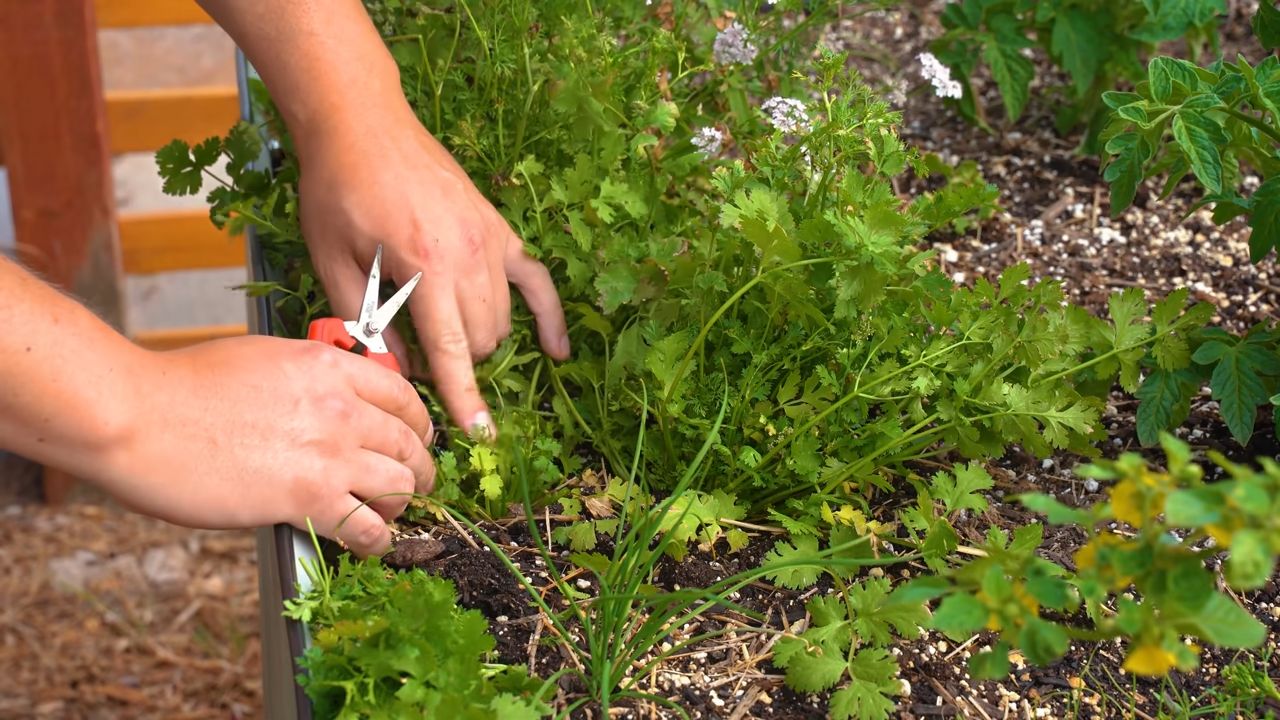
Growing Cilantro at Home: A Comprehensive DIY Guide
Hello, fellow garden lovers! I love fresh cilantro, and nothing is better than harvesting it directly from your own garden. Cilantro can be a bit tricky, but with the right tips and tricks, you can successfully grow it at home. In this article, I’ll show you how it’s done, from sowing to harvesting. Let’s get started!
What you need:
- Cilantro seeds (organic quality is best)
- Starter pots or a seedbed
- High-quality seed-starting mix
- A sunny location (at least 6 hours of sun per day)
- Watering can or spray bottle
- Garden shears or scissors
- Optional: Slow-release fertilizer for herbs
Sowing: The Foundation for Your Cilantro Success
Sowing is the first and most important step. Cilantro doesn’t like to be transplanted, so it’s important to get it right from the start.
1. Choosing the right time: Cilantro is a cool-weather herb. The best time to sow is in the spring (March/April) or late summer (August/September). Avoid the hot summer months, as cilantro will quickly bolt (go to flower). I usually sow a new batch every few weeks to have a continuous supply of fresh cilantro.
2. Preparing the seeds: Coriander seeds are actually small fruits, each containing two seeds. To improve germination, you can lightly crush or split the seeds. This helps the seeds to absorb water more quickly. I usually do this with a rolling pin on a hard surface.
3. Sowing in starter pots or a seedbed: Fill your starter pots or seedbed with seed-starting mix. Lightly press the soil down. Sprinkle the cilantro seeds evenly over the soil. Cover the seeds with a thin layer of soil (about 0.5 cm / 0.2 inches).
4. Watering: Gently moisten the soil with a watering can or spray bottle. The soil should be damp, but not wet. Avoid waterlogging, as this can lead to rot.
5. Location: Place the starter pots or seedbed in a bright and cool location. Direct sunlight is not ideal at this stage.
6. Germination: Germination usually takes 7-14 days. Keep the soil moist during this time.
Care: How to Keep Your Cilantro Healthy and Strong
After germination, the real care begins. Cilantro is relatively low-maintenance, but there are a few things you should keep in mind.
1. Location: Once the seedlings are a bit taller (about 5 cm / 2 inches), you can move them to a sunny location. Cilantro needs at least 6 hours of sun per day to grow optimally.
2. Watering: Water regularly, but avoid waterlogging. The soil should always be slightly moist. On hot days, it may be necessary to water daily. I always check with my finger to see if the soil is dry before I water.
3. Fertilizing: Cilantro is not a heavy feeder, but a light fertilization can promote growth. I like to use a slow-release fertilizer for herbs, which I mix into the soil at planting time. Alternatively, you can fertilize regularly with a liquid fertilizer.
4. Cutting: Regular cutting promotes growth and prevents the cilantro from bolting too quickly. It’s best to cut the leaves in the morning when they are still fresh and juicy. Cut the stems just above the ground.
5. Preventing Flowering: As mentioned, cilantro bolts quickly in high temperatures. If you spot flowers, cut them off immediately. This redirects the plant’s energy back into leaf growth.
6. Pest Protection: Cilantro is relatively resistant to pests. Occasionally, aphids may appear. You can simply rinse them off with a jet of water or use a biological insecticide.
Harvest: The Reward for Your Effort
The harvest is the best part! You can start harvesting as soon as the plants have formed enough leaves (about 15-20 cm / 6-8 inches high).
1. Harvesting Technique: Cut the leaves with garden shears or scissors. Cut the stems just above the ground.
2. Frequency of Harvest: You can harvest cilantro multiple times. The more you harvest, the more leaves the plant will produce.
3. Storage: Fresh cilantro keeps in the refrigerator for a few days. Wrap it in a damp cloth or place it in a glass of water. You can also freeze cilantro. To do this, chop it finely and freeze it in ice cube trays with water.
Cilantro in a Pot or in the Garden?
Cilantro can be grown both in a pot and in the garden. Both options have their pros and cons.
- Cilantro in a pot: The advantage of growing in a pot is that you can choose the location flexibly. You can move the pot to a sunny spot and move it into the shade if needed. You can also bring the pot indoors in the winter to protect the cilantro from frost.
- Cilantro in the garden: The advantage of growing in the garden is that the plants have more space and can develop better. Also, the maintenance is lower, as the plants can supply themselves with water and nutrients.
I personally prefer growing in a pot because it gives me more flexibility and I can better protect the cilantro from extreme weather conditions.
Common Problems and Solutions
Problems can also arise when growing cilantro. Here are some of the most common problems and how you can solve them:
- Cilantro bolts quickly: This means the plant goes to flower too quickly. This usually happens in high temperatures or due to water stress. Solution: Choose a cool location, water regularly, and cut off flowers immediately.
- Yellow leaves: Yellow leaves can be a sign of a nutrient deficiency or waterlogging. Solution: Fertilize the plants regularly and make sure the water can drain well.
- Poor germination: Poor germination can be due to old seeds, soil that is too dry, or temperatures that are too low. Solution: Use fresh seeds, keep the soil moist, and ensure sufficient warmth.
Additional Tips for Growing Cilantro
- Companion plants: Cilantro gets along well with other herbs like dill, parsley, and basil. Avoid planting cilantro near fennel, as the two plants do not get along well.
- Saving seeds: If you wish, you can also save your own cilantro seeds. To do this, simply let some plants flower and the seeds ripen. Harvest the seeds when they are brown and dry.
- Cilantro in the kitchen: Cilantro is a versatile herb that can be used in many dishes. It pairs well with Asian dishes, Mexican dishes, salads, and soups.
I hope this guide helps you successfully grow cilantro at home. Have fun gardening and enjoy your meal
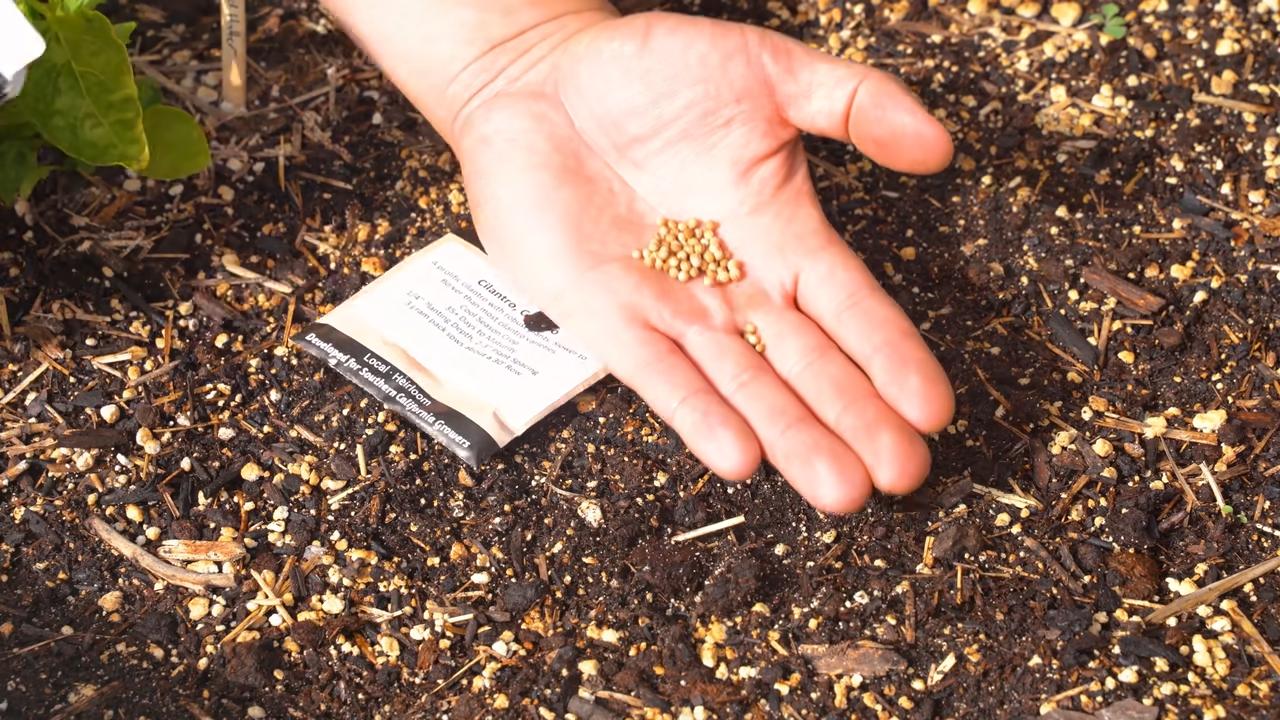
Conclusion
So, there you have it! Growing cilantro at home is not only achievable, but it’s also a rewarding experience that elevates your culinary creations and reduces your grocery bills. Forget those wilting, sad-looking bunches from the supermarket. Imagine stepping into your kitchen and snipping fresh, vibrant cilantro leaves whenever you need them. The difference in flavor is truly remarkable – a burst of citrusy, peppery goodness that store-bought cilantro simply can’t match.
This DIY trick is a must-try for several reasons. First, it puts you in control of the quality. You know exactly what your cilantro is exposed to, from the soil it grows in to the water it receives. Second, it’s incredibly cost-effective. A single packet of cilantro seeds can yield multiple harvests, saving you money in the long run. Third, it’s a sustainable practice. By growing your own herbs, you’re reducing your reliance on commercially grown produce, which often involves long-distance transportation and potentially harmful pesticides.
But the benefits don’t stop there. Growing cilantro can be a therapeutic activity, a chance to connect with nature and nurture something from seed to harvest. It’s also a fantastic way to introduce children to gardening and teach them about where their food comes from.
Looking for variations? Consider growing different varieties of cilantro, such as Santo cilantro, which is known for its slow bolting (going to seed) tendencies. You can also experiment with growing cilantro in different containers, from small pots on your windowsill to larger raised beds in your garden. If you live in a warmer climate, try succession planting – sowing new seeds every few weeks – to ensure a continuous supply of fresh cilantro throughout the growing season. Another great tip is to let some of your cilantro plants bolt. The flowers are edible and attract beneficial insects to your garden, and the seeds (coriander) can be harvested and used as a spice.
Don’t be intimidated if you’ve never grown herbs before. Growing cilantro at home is surprisingly easy, even for beginners. With a little bit of sunlight, water, and well-draining soil, you’ll be well on your way to enjoying a bountiful harvest of fresh, flavorful cilantro.
We encourage you to give this DIY trick a try. Start small, experiment with different techniques, and don’t be afraid to make mistakes. Gardening is a learning process, and every failure is an opportunity to improve. Once you’ve harvested your first batch of homegrown cilantro, we’d love to hear about your experience. Share your tips, tricks, and photos in the comments below. Let’s build a community of cilantro enthusiasts and inspire others to grow their own herbs at home! Let us know what you think about this **grow cilantro at home** guide.
Frequently Asked Questions (FAQ)
What kind of soil is best for growing cilantro?
Cilantro thrives in well-draining soil that is rich in organic matter. A good potting mix specifically formulated for herbs is an excellent choice. You can also amend your garden soil with compost or other organic materials to improve its drainage and fertility. The ideal pH level for cilantro is between 6.0 and 7.5. Avoid heavy clay soils, as they can retain too much moisture and lead to root rot.
How much sunlight does cilantro need?
Cilantro needs at least 6 hours of sunlight per day to thrive. However, in hot climates, it can benefit from some afternoon shade to prevent bolting. If you’re growing cilantro indoors, place it near a sunny window or use a grow light to supplement natural light. Insufficient sunlight can result in leggy, weak plants with poor flavor.
How often should I water my cilantro plants?
Water cilantro regularly, keeping the soil consistently moist but not waterlogged. Check the soil moisture by sticking your finger about an inch deep. If the soil feels dry, it’s time to water. Avoid overwatering, as this can lead to root rot. During hot weather, you may need to water more frequently. When watering, aim for the base of the plant to avoid wetting the foliage, which can increase the risk of fungal diseases.
Why is my cilantro bolting (going to seed)?
Bolting is a common problem with cilantro, especially in hot weather. It occurs when the plant is stressed, causing it to produce flowers and seeds instead of leaves. To prevent bolting, try to provide your cilantro with some afternoon shade, keep the soil consistently moist, and harvest the leaves regularly. You can also choose slow-bolting varieties of cilantro, such as Santo. Once cilantro bolts, the leaves will become bitter and less palatable. However, you can still harvest the seeds (coriander) for use as a spice.
Can I grow cilantro indoors?
Yes, you can successfully grow cilantro indoors. Choose a pot that is at least 6 inches deep and has drainage holes. Use a well-draining potting mix and place the pot near a sunny window or under a grow light. Water regularly, keeping the soil consistently moist. Be sure to provide adequate ventilation to prevent fungal diseases. Indoor-grown cilantro may not grow as quickly or as vigorously as outdoor-grown cilantro, but it can still provide you with a steady supply of fresh leaves.
How do I harvest cilantro?
Harvest cilantro leaves when they are young and tender, typically about 4-6 weeks after planting. Snip off the outer leaves with scissors or pruning shears, leaving the inner leaves to continue growing. Avoid harvesting more than one-third of the plant at a time, as this can stress the plant and slow down its growth. Regular harvesting will also encourage the plant to produce more leaves and delay bolting.
Can I freeze cilantro?
Yes, you can freeze cilantro to preserve it for later use. Wash and dry the cilantro leaves thoroughly. Chop them coarsely and place them in an airtight container or freezer bag. You can also freeze cilantro in ice cube trays by filling each cube with chopped cilantro and water or olive oil. Frozen cilantro will not have the same texture as fresh cilantro, but it will still retain its flavor and can be used in soups, stews, sauces, and other cooked dishes.
What are some common pests and diseases that affect cilantro?
Cilantro is generally resistant to pests and diseases, but it can be susceptible to aphids, spider mites, and fungal diseases such as powdery mildew. To prevent pest and disease problems, keep your cilantro plants healthy by providing them with ade
So, there you have it! Growing cilantro at home is not only achievable, but it’s also a rewarding experience that elevates your culinary creations and reduces your grocery bills. Forget those wilting, sad-looking bunches from the supermarket. Imagine stepping into your kitchen and snipping fresh, vibrant cilantro leaves whenever you need them. The difference in flavor is truly remarkable – a burst of citrusy, peppery goodness that store-bought cilantro simply can’t match.
This DIY trick is a must-try for several reasons. First, it puts you in control of the quality. You know exactly what your cilantro is exposed to, from the soil it grows in to the water it receives. Second, it’s incredibly cost-effective. A single packet of cilantro seeds can yield multiple harvests, saving you money in the long run. Third, it’s a sustainable practice. By growing your own herbs, you’re reducing your reliance on commercially grown produce, which often involves long-distance transportation and potentially harmful pesticides.
But the benefits don’t stop there. Growing cilantro can be a therapeutic activity, a chance to connect with nature and nurture something from seed to harvest. It’s also a fantastic way to introduce children to gardening and teach them about where their food comes from.
Looking for variations? Consider growing different varieties of cilantro, such as Santo cilantro, which is known for its slow bolting (going to seed) tendencies. You can also experiment with growing cilantro in different containers, from small pots on your windowsill to larger raised beds in your garden. If you live in a warmer climate, try succession planting – sowing new seeds every few weeks – to ensure a continuous supply of fresh cilantro throughout the growing season. Another great tip is to let some of your cilantro plants bolt. The flowers are edible and attract beneficial insects to your garden, and the seeds (coriander) can be harvested and used as a spice.
Don’t be intimidated if you’ve never grown herbs before. Growing cilantro at home is surprisingly easy, even for beginners. With a little bit of sunlight, water, and well-draining soil, you’ll be well on your way to enjoying a bountiful harvest of fresh, flavorful cilantro.
We encourage you to give this DIY trick a try. Start small, experiment with different techniques, and don’t be afraid to make mistakes. Gardening is a learning process, and every failure is an opportunity to improve. Once you’ve harvested your first batch of homegrown cilantro, we’d love to hear about your experience. Share your tips, tricks, and photos in the comments below. Let’s build a community of cilantro enthusiasts and inspire others to grow their own herbs at home! Let us know what you think about this **grow cilantro at home** guide.
Frequently Asked Questions (FAQ)
What kind of soil is best for growing cilantro?
Cilantro thrives in well-draining soil that is rich in organic matter. A good potting mix specifically formulated for herbs is an excellent choice. You can also amend your garden soil with compost or other organic materials to improve its drainage and fertility. The ideal pH level for cilantro is between 6.0 and 7.5. Avoid heavy clay soils, as they can retain too much moisture and lead to root rot.
How much sunlight does cilantro need?
Cilantro needs at least 6 hours of sunlight per day to thrive. However, in hot climates, it can benefit from some afternoon shade to prevent bolting. If you’re growing cilantro indoors, place it near a sunny window or use a grow light to supplement natural light. Insufficient sunlight can result in leggy, weak plants with poor flavor.
How often should I water my cilantro plants?
Water cilantro regularly, keeping the soil consistently moist but not waterlogged. Check the soil moisture by sticking your finger about an inch deep. If the soil feels dry, it’s time to water. Avoid overwatering, as this can lead to root rot. During hot weather, you may need to water more frequently. When watering, aim for the base of the plant to avoid wetting the foliage, which can increase the risk of fungal diseases.
Why is my cilantro bolting (going to seed)?
Bolting is a common problem with cilantro, especially in hot weather. It occurs when the plant is stressed, causing it to produce flowers and seeds instead of leaves. To prevent bolting, try to provide your cilantro with some afternoon shade, keep the soil consistently moist, and harvest the leaves regularly. You can also choose slow-bolting varieties of cilantro, such as Santo. Once cilantro bolts, the leaves will become bitter and less palatable. However, you can still harvest the seeds (coriander) for use as a spice.
Can I grow cilantro indoors?
Yes, you can successfully grow cilantro indoors. Choose a pot that is at least 6 inches deep and has drainage holes. Use a well-draining potting mix and place the pot near a sunny window or under a grow light. Water regularly, keeping the soil consistently moist. Be sure to provide adequate ventilation to prevent fungal diseases. Indoor-grown cilantro may not grow as quickly or as vigorously as outdoor-grown cilantro, but it can still provide you with a steady supply of fresh leaves.
How do I harvest cilantro?
Harvest cilantro leaves when they are young and tender, typically about 4-6 weeks after planting. Snip off the outer leaves with scissors or pruning shears, leaving the inner leaves to continue growing. Avoid harvesting more than one-third of the plant at a time, as this can stress the plant and slow down its growth. Regular harvesting will also encourage the plant to produce more leaves and delay bolting.
Can I freeze cilantro?
Yes, you can freeze cilantro to preserve it for later use. Wash and dry the cilantro leaves thoroughly. Chop them coarsely and place them in an airtight container or freezer bag. You can also freeze cilantro in ice cube trays by filling each cube with chopped cilantro and water or olive oil. Frozen cilantro will not have the same texture as fresh cilantro, but it will still retain its flavor and can be used in soups, stews, sauces, and other cooked dishes.
What are some common pests and diseases that affect cilantro?
Cilantro is generally resistant to pests and diseases, but it can be susceptible to aphids, spider mites, and fungal diseases such as powdery mildew. To prevent pest and disease problems, keep your cilantro plants healthy by providing them with adequate sunlight, water, and ventilation. Inspect your plants regularly for signs of pests or diseases and take action promptly if you notice any problems. You can use insecticidal soap or neem oil to control aphids and spider mites. To prevent fungal diseases, avoid overwatering and ensure good air circulation around your plants.
How long does cilantro take to grow?
Cilantro typically takes about 4-6 weeks to mature from seed to harvest. However, the exact time will depend on the growing conditions, such as sunlight, temperature, and soil fertility. In warm weather, cilantro may grow more quickly, but it is also more likely to bolt. In cooler weather, cilantro may grow more slowly, but it will also be less likely to bolt.
What can I do with cilantro seeds (coriander)?
Cilantro seeds, also known as coriander, are a popular spice used in many cuisines around the world. You can harvest coriander seeds by allowing your cilantro plants to bolt and produce flowers. Once the flowers have dried and the seeds have turned brown, you can harvest them by cutting off the seed heads and drying them further. You can then use the coriander seeds whole or grind them into a powder. Coriander has a warm, citrusy flavor that is often used in curries, stews, and spice blends.

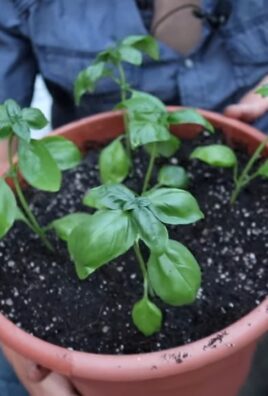
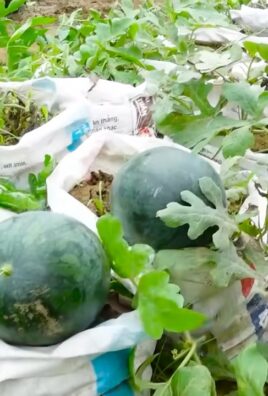
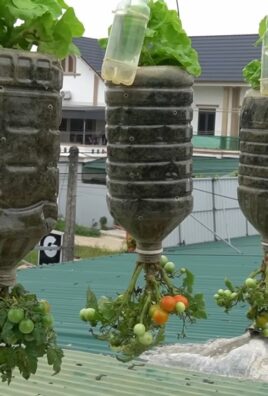
Leave a Comment